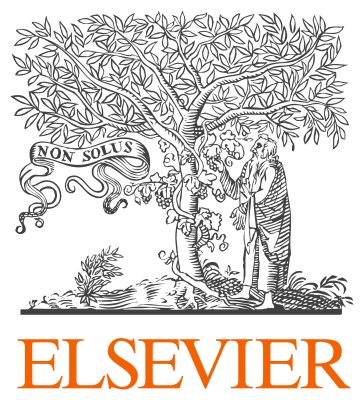2018 IEEE GLOBAL COMMUNICATIONS CONFERENCE: WORKSHOPS: IEEE WORKSHOP ON SOFTWARE DEFINED NETWORKING FOR 5G ARCHITECTURE IN SMART COMMUNITIES
|
Time |
Thursday, December 13 |
|
8:30‑ 9:30 am |
SDN5GSC-K1 Keynote 1 (Conference Hall B: Part D): On the Role of Wireless Networks as Key Enabling Technology for Smart Homes and Cities: Trends, Challenges and Samples of our Related Works by Prof. Mohammad S. Obaidat |
|
9:30‑10:30 am |
SDN5GSC-S1 Technical Session 1 (Conference Hall B: Part D) |
|
10:30‑11:00 am |
Networking Break |
|
11:00-12:00 am |
SDN5GSC-S2 Technical Session 2 (Conference Hall B: Part D) |
THURSDAY, DECEMBER 13 8:30 - 9:30 am
KEYNOTE LECTURE: On the Role of Wireless Networks as Key Enabling Technology for Smart Homes and Cities: Trends, Challenges and Samples of our Related Works by Prof. Mohammad S. Obaidat
THURSDAY, DECEMBER 13 9:30 - 10:30 am
TECHNICAL PAPERS: SDN5GSC-S1 Technical Session 1
Hybrid Energy System for Upgrading the Rural Environment
Mesfin Jariso (Hawassa University Institute of Technology, Hawassa Ethiopiat, Ethiopia); Baseem Khan (Hawassa University, Ethiopia); Sudeep Tanwar (Institute of Technology Nirma University Ahmedabad Gujarat, India); Sudhanshu Tyagi (Thapar Institute of Engineering & Technology, Deemed University, Patiala, India); Vinay Rishiwal (MJP Rohilkhand University, India).
SDN - Architectural Enabler for Reliable Communication over Millimeter-Wave 5G Networks
Biswa PS Sahoo (National Taiwan University, Taiwan); Chung-Wei Weng (National Taiwan University, Taiwan); Hung-Yu Wei (National Taiwan University, Taiwan).
Angular Spread Quantification of Multi-Antenna Vehicular Radio Communication Channels
Abrar Ahmed (COMSATS University Islamabad, Pakistan); Junaid Nawaz Syed (COMSATS University Islamabad, Pakistan); Sardar Muhammad Gulfam (COMSATS University Islamabad, Pakistan); Shurjeel Wyne (COMSATS University Islamabad, Pakistan); Mohammad N Patwary (Birmingham City University, Birmingham, United Kingdom (Great Britain)); Haris Bin Pervaiz (Lancaster University, United Kingdom (Great Britain)).
THURSDAY, DECEMBER 13 11:00 - 12:00 am
TECHNICAL PAPERS: SDN5GSC-S2 Technical Session 2
TROD: Throughput-Optimal Dynamic Data Traffic Management in Software-Defined Networks
Ayan Mondal (Indian Institute of Technology, Kharagpur, India); Sudip Misra (Indian Institute of Technology, Kharagpur, India); Aishwariya Chakraborty (Indian Institute of Technology, Kharagpur, India).
Base Station Oriented Multi Route Diversity Protocol for WirelessSensor Networks
Sudeep Tanwar (Institute of Technology Nirma University Ahmedabad Gujarat, India); Vinay Rishiwal (MJP Rohilkhand University, India); Omkar Singh (MJP Rohilkhand University, India); Sudhanshu Tyagi (Thapar Institute of Engineering & Technology, Deemed University, Patiala, India); Ishan Budhiraja (Thapar Institute of Engineering & Technology, Deemed University, Patiala, India); Neeraj Kumar (Thapar Institute of Engineering & Technology, Deemed University, Patiala, India); Mohammad S. Obaidat (University of Jordan, Jordan).
An Efficient Embedding Algorithm for Energy Multi-Domain Virtual Network Embedding
Haotong Cao (Nanjing University of Posts and Telecommunications, P.R. China); Shengchen Wu (Nanjing University of Posts and Telecommunications, P.R. China); Hongbo Zhu (Nanjing University of Posts and Telecommunications, P.R. China); Longxiang Yang (Nanjing University of Posts and Telecommunications, P.R. China).
On the Role of Wireless Networks as Key Enabling Technology for Smart Homes and Cities: Trends, Challenges and Samples of our Related Works
Distinguished Keynote Speaker
Mohammad S. Obaidat, Fellow of IEEE and Fellow of SCS
Past President, Society for Modeling and Simulation International (SCS)
Founding Editor-in-Chief, Security and Privacy Journal, Wiley
Editor-in-Chief, International Journal of Communication Systems, Wiley
Editor, IEEE Wireless Communication
Editor, IEEE Systems Journal
Distinguished Speaker of IEEE Computer Society (94-97)
Distinguished Lecturer of ACM (1995-2016)
Distinguished Lecturer of SCS
Inductee of SCS Hall of Fame- Life Achievement Award
E-mail: msobaidat@gmail.com
Abstract: Digital and smart homes and cities have become an important research and development area in the 21st century due mainly to their significance to national and international health, economy, safety, transportation, and security, among others. ICT Systems have played a vital role in the emergence and development of smart cities and homes. The impressive advances in areas of information and wired and wireless communications technology have brought with them the prospect of embedding different hierarchies of smartness and intelligence in the modern home and cities. Offering comfort and safe and healthy living with an intelligent form of collaboration with their residents has been the prime goal of smart and digital homes and cities. Contingent upon the settings, the communications may be multifaceted such as mobile agent based and context-aware services or they may be uncomplicated such as controlling the room temperature or its humidity level. Sophisticated situations include the delivery of position/location-aware info content of the resident of the digital home as well as his/her activities.
The availability of inexpensive low-power sensors, the RF IC chips, and the embedded microprocessors/ microcontrollers have made tremendous impact on digital homes and cities; with large quantity of sensors, which jointly manage and make the inferences from the collected data on the state of the home and city as well as the actions and behavior of the inhabitants.
As the worldwide life expectancy, especially in developed countries and newly industrialized counties is increasing, the percentage of senior/elderly citizens is increasing at an accelerated pace and most projections suggest that this increase worldwide will reach about 10 millions in the coming decade. Senior citizens usually live in care centers, hospitals or their own homes with some relative supervision/care. Smart homes and cities can be used efficiently and economically in order to accommodate the needs of this population.
The increase of worldwide population, especially in populous countries and cities and the increase migration of citizens to cities have also brought with it challenges in transportation systems, health care, utility’s supplies, learning & education, sensing city dynamics, computing with heterogeneous data sources, managing urban big data, and environmental protection including pollution and others.
In this keynote, we will shed some light on the roles of Wireless Networks as a key enabling Information and Communications technology to smart cities and homes. We will also investigate the advances, current trends, challenges and future in the research and development in smart homes and cities.
Some of our recent research results, especially the ones related to the use of wireless networks and security for smart and digital homes will be presented. Among these, fire detection schemes in forests. An intelligent system for fire prediction based on wireless sensor networks is presented. This system obtains the probability of fire and fire behavior in a particular area. This information allows firefighters to obtain escape paths and determine strategies to fight the fire. A firefighter can access this information with a portable device on every node of the network.
Also, we will introduce an adaptive MAC protocol for distributed wireless LANs that is capable of operating efficiently under bursty traffic conditions. According to the proposed protocol, the mobile station that is granted permission to transmit is selected by means of a neural-based algorithm. Another new protocol for dynamically setting 802.11 wireless LAN waveforms and transmission power levels based on the wireless channel’s signal to noise ratio will be introduced. Our method, known as Signal-to-Noise Ratio-Waveform Power Adaptation (SNR-WPA), changes the power in discrete steps matched to each of the 802.11 data rate-waveform steps. By matching the power to the spreading symbol rate, our technique maximizes the network throughput while minimizing MAC layer contention. We present other new schemes to authenticate and authorize 802.11 wireless nodes within a network. This new layer of security relies on a neural network decision engine that restricts network access to mobile nodes whose physical location is within a threshold distance from the wireless access point or the controller of the network. Other related wireless research efforts by our group will be presented.
Short Bio of The Distinguished Keynote Speaker: Professor Mohammad S. Obaidat is an internationally known academic/researcher/scientist/scholar. He received his Ph.D. degree in Computer Engineering with a minor in Computer Science from the Electrical and Computer Engineering (ECE) Department, The Ohio State University, Columbus, USA. He has received extensive research funding and published over 840 refereed technical articles-About half of them are journal articles, over 60 books, and over 60 Book Chapters. He is Editor-in-Chief of 3 scholarly journals and an editor of many other international journals. He is the founding Editor-in Chief of Wiley Security and Privacy Journal. Among his previous positions are Advisor to the President of Philadelphia University for Research, Development and Information Technology, President of the Society for Molding and Simulation International, SCS, Senior Vice President of SCS, Dean of the College of Engineering at Prince Sultan University, Chair and tenured Professor at the Department of Computer and Information Science and Director of the MS Graduate Program in Data Analytics at Fordham university, Chair and tenured Professor of the Department of Computer Science and Director of the Graduate Program at Monmouth University. He is now a Full Professor at Nazarbayev University, Astana, Kazakhstan, a Full Professor at King Abdullah II School of Information Technology, University of Jordan, The PR of China Ministry of Education Distinguished Overseas Professor at the University of Science and Technology Beijing, China and an Honorary Distinguished Professor at the Amity University- A Global University. He has chaired numerous (Over 160) international conferences and has given numerous (Over 150) keynote speeches worldwide. He founded or co-founded four international conferences. He has served as ABET/CSAB evaluator and on IEEE CS Fellow Evaluation Committee. He has served as IEEE CS Distinguished Speaker/Lecturer and an ACM Distinguished Lecturer. Since 2004 has has been serving as an SCS Distinguished Lecturer. He received many best paper awards for his papers including ones from IEEE ICC and IEEE Globecom international conferences. He also received many worldwide awards for his technical contributions including: SCS prestigious McLeod Founder's Award , Presidential Service Award, SCSHall of Fame –Lifetime Achievement Award for his technical contribution to modeling and simulation and for his outstanding visionary leadership and dedication to increasing the effectiveness and broadening the applications of modeling and simulation worldwide. He was awarded in 2017 the IEEE CITS Hall of Fame Distinguished and Eminent Award. He has been awarded with the Amity University Distinguished Honorary Professor Award. He also received the Distinguished Professor Award from University of Science and Technology-Beijing, China, and the SCS Outstanding Service Award. He is a Life Fellow of IEEE and a Fellow of SCS.


















.png%3Fitok=UcTlxbOp)



